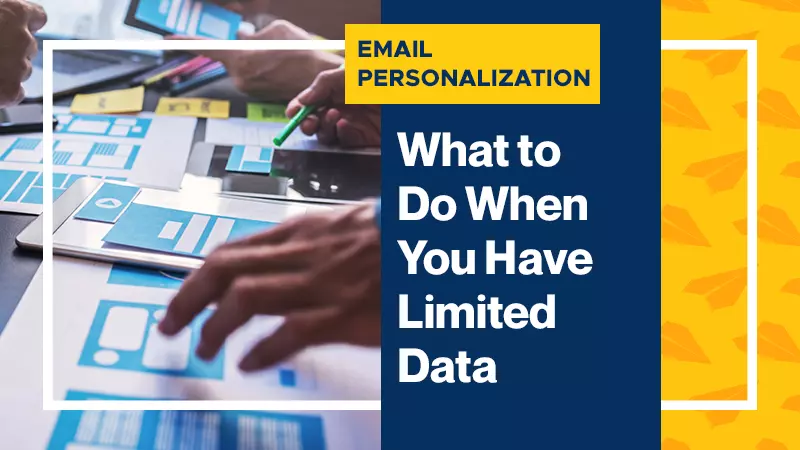When it comes to email personalization, data is very important. But what if you have very limited data to begin with?
The first line of action that comes to mind is using your prospect’s first name.
It’s just the most logical thing to do, isn’t it?
In real life, when you greet someone using their first name, you easily win the person even though he or she might not recognize you at first. It makes a person feel warm and important knowing someone knows or remembers who they are.
A study conducted by the Stanford Graduate School of Business also revealed that emails using the first name on the subject line has 20 percent more chances of being opened.
If such is the case, why stop using it?
Why First Names Don’t Work Anymore
Have you ever met someone at a party and you called them by name? The problem is, you used the wrong name.
How does that feel? Awkward, right?
The same thing goes when you email someone using the wrong name. Not only does it feel awkward but you can send your prospect away from you instead of drawing them toward you.
Secondly, almost everyone has been using this technique, so it could get quite stale. Chances are, consumers are already aware of such technique and it can become an annoyance to them.
Lastly, getting an email from anyone with your first name on it can be quite creepy. You begin to wonder how much information they have gathered about you.
There’s More Than Just First Names
If using first names on your subject line doesn’t work anymore, are there any other ways to personalize your email without the proverbial first name?
Here are some email personalization strategies you can use as an alternative to using names. These techniques also work well when you have limited data in your hands.
Dynamic Content and Imagery
Use geographical or demographical data and combine them with relevant images to create dynamic content.
For example, if you are targeting the Australian market, you can use pictures or images that Australians can relate to, like the Sydney Opera House, koalas, and more. If you are targeting the Singaporean audience, you can use familiar places and landmarks, such as the Merlion, Sentosa, and more.
One of the best examples of this is PayPal. The images, even the language, change depending on which location you are. They make good with their promise: “We get where you’re coming from.”
You can also use demographic data — such as gender — in case you have very limited data. Adidas used this strategy for their Originals series email campaign. Whether the subscriber is a male or female, they made sure the recipient is receiving relevant information that will entice them to make a purchase.
Target Consumer Persona
Another way of personalizing your email without using first names is by using a name that perfectly describes your buyer’s persona. For example, if you are a travel company, you might use the word “traveler.” If you are a clothing brand, you might address your recipients, “Hey there, fashionista.”
The online news magazine, Coconuts.co, aptly call their readers “coconauts” while Adobe dynamically changes the recipient field with the names of their target audience.
“From” + First Name
Using first names on the subject line might be stale but using your first name or the name of your company in the “From” field works to your advantage. According to statistics, 68 percent of Americans say that they open an email based on who it came from.
You can either use your company name or the name of the person of the account manager so it appears that it comes from them.
Conclusion
Using first names to personalize your email when you have limited data is not wrong. However, using it does not guarantee that the recipient will click that email and open it. It can or cannot work, depending on the audience. You can use the above suggestions and conduct your own A/B testing to see which works for your target audience.













